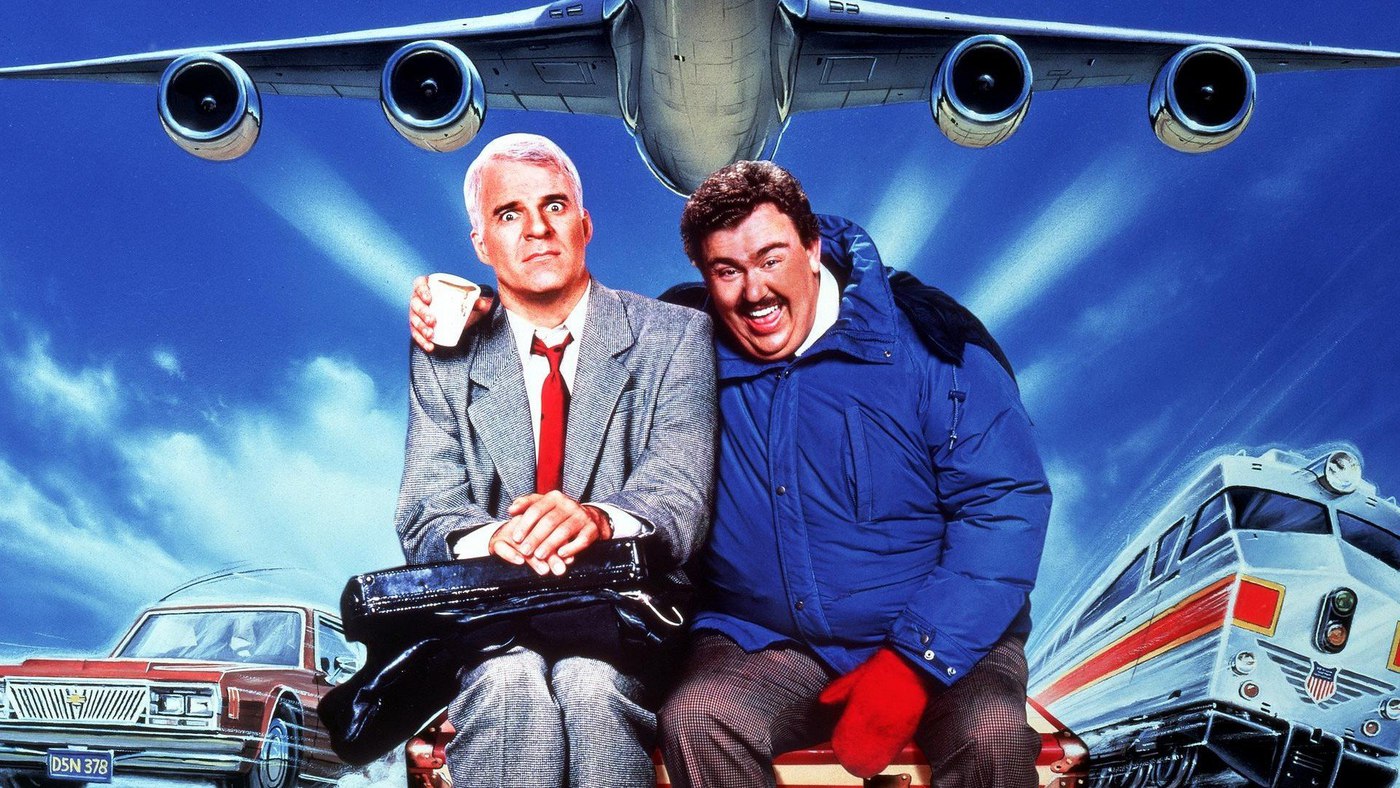
The Future of Logistics? It’s All about Information, Not Planes, Trains and Automobiles
Business Process Management (BPM) | Logistics
Business disruption – driven by massive changes in technology and information management – is sweeping through every industry – even transportation and logistics.
Here’s PwC’s take on the changes sweeping through the transportation and logistics industry.
“Like most other industries, transportation and logistics (T&L) are currently confronting immense change, and like all change, this brings both risk and opportunity. New technology, new market entrants, new customer expectations, and new business models.”
If that’s not convincing enough, consider McKinsey and Company’s perspective:
“The digital revolution has profound and specific implications for the transportation and logistics sector. In order to survive and thrive as they transform into digital businesses, companies in this sector need to consider each step of the value chain, from acquiring and delighting customers, to increasing operational efficiency.”
We usually think of challenges in transportation and logistics in terms of the physical mechanics of transporting an item from point A to point B. And while that certainly remains an important part of the T&L equation, future market leaders will need to focus on six key trends – information management trends – that are redefining the T&L landscape.
1. Companies need to commit to digitizing their core back-end T&L processes.
Most companies still have a significant number of staff assigned to manual data capture and exchange activities such as Track & Trace, gathering freight bill invoice information, managing customs forms, or securing proofs of delivery (PODs). Although essential, these activities are resource intensive, error-prone and tend to slow down billing and cash collection. PwC notes, “Digital fitness is a challenge for the sector, which is currently lagging many of its customers in this respect. Attracting the right skills is one issue, but developing the right strategy is even more crucial.”
McKinsey believes that “Digitization will transform the back end of transportation and logistics businesses. Digital solutions are capable of reducing costs and adding more value to services in all facets of operational processes. According to our research, partial or full automation, e.g., driverless trucks (already technologically possible), can reduce transport costs by 25 to 40 percent, delivery time by 30 percent, and the number of accidents by more than 50 percent.
2. Containerization is about to be pushed to the next level.
“Containerization is a system of intermodal freight transport using intermodal containers (also called shipping containers and ISO containers) made of weathering steel. The containers have standardized dimensions. They can be loaded and unloaded, stacked, transported efficiently over long distances, and transferred from one mode of transport to another—container ships, rail transport flatcars, and semi-trailer trucks—without being opened. The handling system is completely mechanized so that all handling is done with cranes and special forklift trucks. All containers are numbered and tracked using computerized systems [source: Wikipedia].”
There are countless ways in which the Internet of Things (IoT) will further amplify and transform the benefits of containerization. In Delivering the Goods: 8 Examples of IoT Transforming Supply Chain, Freddie Roberts describes how IoT technologies allow shipping line Maersk’s 300,000 refrigerated containers “to transmit vital stats, such as temperature, location and power supply, via satellite. The information is sent to the cloud and analyzed in a central office. As well as offering real- time information as issues develop, however, the collaboration has also led to increased safety for port staff, as containers now require less manual inspection.”
The Hamburg Port Authority “is embedding sensors and communicative capacities in the port’s ‘main tangible assets.’ This includes smart lighting based on motion detection to only light up necessary areas. The main function of the sensors is to identify recurring underused capacity so it can be used properly. However, there are numerous other connected elements such as cameras, heat detection sensors and alarm systems prevent theft and provide insight for planning security updates.”
3. Companies are demanding greater transparency across their supply base – and that means information management must be standardized and automated.
According to KPMG, 40% of global manufacturers lack information and material visibility across their supply bases. Poor visibility can lead to shipment delays, supply-chain disruptions, and revenue losses that can severely affect a global business.
4. Manufacturers are information-driven T&L processes to help them mitigate the increased risk of longer and more variable supply chains.
In Logistics & Transportation Executives Facing Today’s Challenges, Juan Morales highlights the new challenges facing extended supply chains and the need for a well-thought out information management strategy to help address those risks.
“A volcanic cloud descends on Europe, disrupting flight plans. A tsunami in Thailand ripples across the Pacific and affects port activity in California. Forest fires in Los Angeles close highways for days. Threats of a terrorist attack in Brussels halt all transportation. A ‘computer glitch’ shuts down United Airlines system-wide for several hours on the same day that the NYSE shuts down. These are typical scenarios for today’s logistics & transportation executives whose jobs have become as much about dealing with a crisis and understanding technology than simply about loading boxes on trucks, trains, ships, and airplanes.”
5. The “last mile” is in the process of huge transformation.
Everyone has seen the videos of pizza-delivering drones. But in many ways, these videos oversimplify the potential impact of new players – leveraging more consistent information management practices on the part of the existing players – who are entering the marketplace with new information-fueled business models focused on the last mile problem. Various Uber derivatives and Uber clones are beginning to enter the marketplace, focused on leveraging mobile infrastructure for last mile package delivery. PwC believes that last mile is becoming “more fragmented, exploiting new technologies like cloud platforms and crowd- sharing. These start-ups collaborate with incumbents and complement their service offers.”
McKinsey uses a crowd sourcing analogy to describe the massive changes impacting the last mile: “Dozens of platforms already exist for local crowdsourced delivery arrangements. For example, with Barnacle, drivers can post their driving routes with a mobile app and get notified of any delivery requests. Friendshippr leverages a Facebook user’s own network by helping turn Facebook friends into couriers. These services represent both a threat and an opportunity for traditional postal and logistics services. DHL Parcel delivers parcels to a service point/depot (‘Packstation’ or ‘Paketshop’) and enables recipients to pay others for pickup and “last-mile” delivery, thus bypassing high costs for covering remote areas. Start-ups in crowdsourced delivery typically offer fast local, point-to-point deliveries (instant, scheduled), easy access via online platforms and application.”
6. All of the above information-centric transformations open up enormous opportunities for insights driven by analytics.
Innovative companies will use analytics to optimize the enormous amounts of data created by the above digital T&L initiatives. This will allow innovative companies to not only transform their own customer-facing and internal processes, but also use these insights to expand their value to the manufacturing customers.
About John Mancini
John Mancini is the President of Content Results, LLC and the Past President of AIIM. He is a well-known author, speaker, and advisor on information management, digital transformation and intelligent automation. John is a frequent keynote speaker and author of more than 30 eBooks on a variety of topics. He can be found on Twitter, LinkedIn and Facebook as jmancini77. Recent keynote topics include: The Stairway to Digital Transformation Navigating Disruptive Waters — 4 Things You Need to Know to Build Your Digital Transformation Strategy Getting Ahead of the Digital Transformation Curve Viewing Information Management Through a New Lens Digital Disruption: 6 Strategies to Avoid Being “Blockbustered” Specialties: Keynote speaker and writer on AI, RPA, intelligent Information Management, Intelligent Automation and Digital Transformation. Consensus-building with Boards to create strategic focus, action, and accountability. Extensive public speaking and public relations work Conversant and experienced in major technology issues and trends. Expert on inbound and content marketing, particularly in an association environment and on the Hubspot platform. John is a Phi Beta Kappa graduate of the College of William and Mary, and holds an M.A. in Public Policy from the Woodrow Wilson School at Princeton University.



